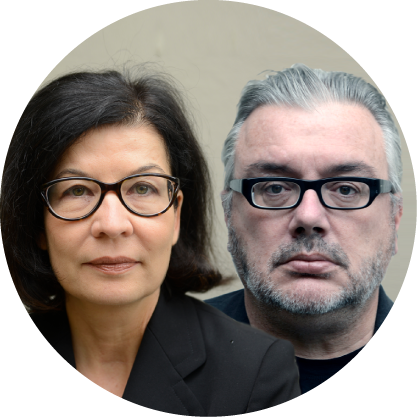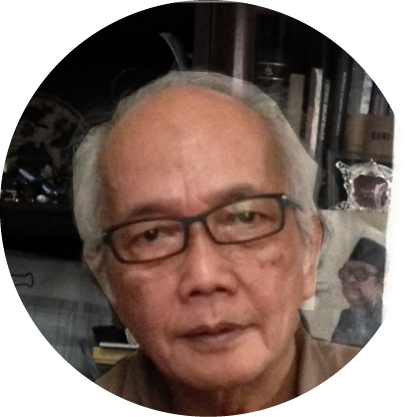KEYNOTE SPEAKERS

MARKUS BERGER
Department of Interior Architecture Rhode Islands School of Design, USA co-founder of Int|AR Journal

NAM-KYU PARK
Department of Interior Design University of Florida, USA Board of Directors, Journal of Interior Design

SUZIE ATTIWILL
School of Architecture and Design RMIT, AustraliaExecutive Editor, IDEA Journal
PLENARY SESSION SPEAKERS
Thea Brejzek & Lawrence Wallen (University of Technology Sydney) | Jill Franz (Queensland University of Technology) | Christine McCarthy (Victoria University) | Graeme Brooker* (Middlesex University) | Valerie Mace (University of the Arts London) | Alistair Neil Harkess* (New Design University Sankt Poelten) | Paramita Atmodiwirjo (Universitas Indonesia) | Triatno Yudo Harjoko (Universitas Indonesia)

Markus Berger
Leftover Spaces: Rediscovering Qualities for Interior Architecture
The talk attempts to rethink the values of the mind, body and soul of a space in the field of interior architecture and design. Looking at the history of building and design, it critically exams the recent past and current practices in the profession, research and teaching in the field. The lecture aims to outline strategies geared towards renewed spatial understandings that focus on spatial- perceptual and spatial-sensory values to enhance the experiential qualities in design.
The talk aims to build a renewed, creative and environmentally engaged conceptual framework for the field of Interior Architecture by drawing out the complex layers of meaning carried within the word UMBAU.
UMBAU, a German word that comes from the prefix “Um” (an action is repeated in a new and different way in order to change a state; or “a movement from one place to another”) and the word Bau, (to build or building). Umbau translated, offers a very wide array of meanings that go from simple rebuilding to forms of modifications, synonyms for evolution and metamorphoses, and also as a means to build around such that Umbauter Raum becomes an interior space.
The talk reviews challenges and visions for a renewed experience of the interiority, of space/ place that integrates the sensuality and spirit of human life. A reflection for the design of the built world, exploring the unseen/ non-visual potential of space and understanding the complex web of social, economic, and ecological parameters that take into account the mind, body and soul of a space.

Nam-Kyu Park
Creative Approach for Design Research
As the academic discipline of interior architecture continues to mature, the common body of knowledge known as design research has advanced. Evidence-based design solutions from body of knowledge in interior achitecture provide practitioners with a method to stand, defend, and rationalize their design decisions as they relate to the human experience of the designed environment. Integrating research into design practice is a way to further evolve the profession of interior architecture as well as provide a link between the professional and scholarly worlds. Design scholars engaged in generating evidence-based design knowledge should use creative and rigorous research methods to provide valid and reliable research outcomes and promote the integration of research into the design process. Thus, the purpose of this presentation is to discuss a creative approach for design research using exemplary case studies. These case studies, pulled from a variety of design contexts including healthcare, retail, hospitality, institutional, and residential environments will illustrate the value of informing design with research.

Suzie Attiwill
A Produced Interiority
My research within the discipline of interior design has been motivated by the question of interior as a problematic. Dominant ideas of interior and interiority inhere in the practice and discourse of interior design and architecture as unquestioned self-givens. These include the equation of interior with enclosed and pre-existing space; and interiority as something which exists independently and one where phenomenological and Cartesian notions of subject are implicated.
The writings of Gilles Deleuze enable one to reorient a way of thinking ‘interior’ and ‘interiority’. He approaches interiority not an entity or a thing, or a relation between mind/body and interior/exterior but as an assemblage. For him, there is no natural interiority involved in human subjectivity. ‘Rather the subject is formed from pre- subjective parts, which are held together by a network of relations. … In other words, specific beings are produced from within a generalised milieu of exteriority without reference to any guiding interiority’ (Roffe: 95).
While this could be seen as a dismissal of the concept of interiority, what Deleuze emphasises is interiority as a creative production. In his book Foucault, he describes interiority as an inflection of the outside; as a production of bent forces affected by and affecting external forces.
The potential for the practice of interior design as a discipline that addresses the designing of interiors and the constitution of interiority is amplified and open. Interior design becomes a critical practice where the question of interiority as a creative production as distinct from a given (self/subject, enclosed space/object) connects with contemporary concerns.
This paper will contribute to the track ‘Knowledge in Interiority’ by shifting the conjunction from ‘in’ to ‘and’ to approach interiority as a production that also produces knowledge (as distinct from knowledge inhering in interiority).

Jill Franz
What Makes Interior Design/Interior Architecture Necessary and Possible?

Thea Brejzek & Lawrence Wallen
The 1:1 Architectural Model as Performance and Double

Christine McCarthy
Inside History

Graeme Brooker*
The Dialectics of the Interior
*virtual presentation

Valerie Mace
Sensing the Urban Interior

Alistair Neil Harkess*
Bodies Covering – Interior Space

Paramita Atmodiwirjo
Anatomy of Space: Understanding Interiority for Users’ Well-Being

Triatno Yudo Harjoko
In Search for Design Ideas: Interiority